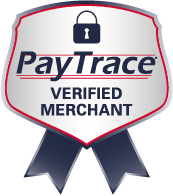The Best of Both Worlds
While Inbound Marketing has been around for a few years now, the concept is constantly being refined. Because of this, we still get questions from some pretty smart people about what exactly “Inbound Marketing” means and how they can benefit from it. Of course, without a clear understanding of this key approach, it’s impossible to benefit from it.
According to Hubspot, a large provider of tools for marketers, companies that understand and use inbound marketing enjoy what is called “…the proven marketing methodology for the digital age.”
In other words, Inbound Marketing leverages the best of traditional marketing with the benefits of digital.
The Four Basic Steps of Inbound Marketing
Inbound marketing can be easily described in four straightforward steps that help coax your prospects and customers through the buying process.
Here’s how companies use inbound marketing to improve sales, brand reputation, and ROI:
A. Attract and convert strangers into online visitors: Marketers can use the content of their own websites, their blogs, social networking sites, and other content to attract new, potential customers.
Marketers then use these different online platforms to distribute their important information (tips, product reviews, etc.) which in turn helps attract prospects that are doing research to buy a product or service similar to yours. The object is to help these prospects become aware of your brand, product, or service so you are at least included in the decision-making mix.
The difference is that this step not meant to find customers, it is to make sure that customers find you.
B. Convert website visitors into prospects: Once your marketing content has been found by the right people (people that are interested in your product or service), the next step is to turn them into actual prospects.
Successful marketers use a number of tools to accomplish this. These tools include lead forms, landing pages, calls-to-action, and other tools that encourage your visitors to either connect with you directly or to have them give you their contact information. Your job is to build lists out of these leads so you can nurture and stay connected while they are in the decision-making process.
C. Turn prospects into customers: This is the time when sales actually get closed. Marketing tools here include emails, sales pages, promotional offers, and phone calls as appropriate. Pro Tip: The more personalized your message to specific customers, the more effective the conversion from prospect to buyer.
D. Delight customers: The real potential of inbound marketing is when first-time customers become loyal customers who then make repeat purchases and even let their own social circles know how happy they are with your brand.
During this step, marketing automation tools, referral programs, social media, and customer surveys help marketers stay connected with their customers in order to increase loyalty and repeat business.
Why Inbound Marketing Works Online
While the traditional approach to marketing (direct mail, etc.) still plays a vital role in helping to grow your company, these approaches are much more effective when you combine them with inbound marketing.
As your prospects have learned to use online tools to research their purchase decisions, using these strategies is more essential to helping you continue to grow your business. In this digital age, inbound marketing helps you get found by your prospects who are looking for solutions.
Because at the end of the day, it doesn’t matter how good you are if your prospects don’t even know you exist.
More on Inbound Marketing
Check out some of our earlier DBC Digital blogs here and here for more information and some suggested analytics tools to use in building your inbound marketing strategy.
To learn more about Inbound Marketing or to discuss a new marketing project with us, give us a call at (303) 357-5757 or drop us a line at dbc@dbcdigital.com



